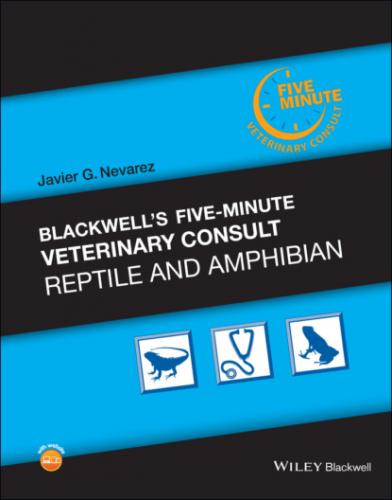Other HV‐associated diseases described in sea turtles: gray patch disease (skin lesions in young green sea turtles); LETD (respiratory disease in green sea turtles); LGRV, and LOCV in wild‐caught loggerhead sea turtles.
Tortoises
Acute: lethargy, anorexia, caseous plaques on the tongue and palate, dyspnea, hepatitis. Severe disease with high morbidity and mortality associated with TeHV3 infection in various tortoise species. Infection may be clinically inapparent in some cases, although disease can develop in any species. TeHV1 and TeHV4 may be associated with less severe disease or inapparent infections.
Chronic: surviving tortoises may develop CNS signs, including paralysis or incoordination. Clinically healthy carriers are also possible.
Turtles
Sudden death, weakness, nasal discharge, stomatitis, papillomatosis, and hepatitis.
Herpesviruses have also been detected in apparently clinically healthy animals.
RISK FACTORS
Husbandry
Mixing of different tortoise species leads to an increase in the probability of inapparent carriers transmitting virus to highly susceptible species.
In sea turtles, sudden changes in temperature and exposure to environmental pollutants have both been shown to increase susceptibility to HV disease.
Others
N/A
DIFFERENTIAL DIAGNOSIS
In tortoises: depending on the presentation, mycoplasma infections (esp. in cases with upper respiratory disease), ranavirus (family Iridoviridae) infections, topivirus
(family Picornaviridae) infections, bacterial and/or fungal stomatitis.
DIAGNOSTICS
Virus detection
Most commonly done using PCR detection of viral DNA.
A pan‐HV PCR can be used to detect all reptilian HV described so far.
PCRs for specific chelonian HV have also been described.
In sea turtles, material from fibropapillomas should be used for testing; in tortoises oral swabs, tongue, liver and brain can be tested.
Material from any lesions observed should be included in any testing scheme.
Serology
Virus neutralization tests have been used for the detection of antibodies against TeHV1 and 3 in tortoises.
An ELISA has also been described for the detection of antibodies against these two viruses and against TeHV2, but may not be commercially available.
PATHOLOGICAL FINDINGS
Ballooning degeneration and necrosis may be noted in infected epithelial cells, necrosis and inflammation in affected tissues.
Fibropapillomas consist of a hyperplastic epidermis and a thickened hypercellular dermis.
Infected cells may contain eosinophilic to amphophilic intranuclear inclusions.
APPROPRIATE HEALTH CARE
There are no standardized protocols for treating HV‐infected reptiles.
Strict quarantine, biosecurity, and hygiene are essential for the prevention of HV infections.
Autovaccination with inactivated material from surgically removed fibropapillomas has been suggested.
Keeping animals at the high end of their POTZ may help in recovery, as well as treatment of secondary bacterial infections.
NUTRITIONAL SUPPORT
Herpesvirus infected reptiles may be anorexic and nutritional support may be necessary.
In animals with oral lesions, esophagostomy tubes may be necessary.
CLIENT EDUCATION/HUSBANDRY RECOMMENDATIONS
Testing for both virus and antibodies (in tortoises) should be in place.
An effective quarantine regimen should be in place.
Mixing of tortoise species should be avoided.
Infected animals must be isolated
SURGICAL CONSIDERATIONS
For fibropapillomas—surgical removal of lesions.
DRUG(S) OF CHOICE
Acyclovir 80 mg/kg PO q24h (famciclovir has been shown to be safer in mammals and may be an alternative choice for treatment).
Acyclovir topically on lesions or topical disinfection (e.g., with 0.5% chlorhexidine solution) have also been suggested.
The use of immunomodulators (e.g., Zylexis (Pfizer AG, Zurich, Switzerland)) has been suggested in HV infected tortoises, but its efficacy is unproven.
PRECAUTIONS/INTERACTIONS
Affected animals should be barrier nursed and in‐contact animals should be placed in quarantine.
PATIENT MONITORING
Development of disease in contact animals may take several weeks, so monitoring of a collection (and barrier nursing of contact animals) should remain active for at least one season.
There is some indication that brumation may provoke disease outbreaks, and intensified health monitoring should be carried out in the spring and again before the next brumation.
EXPECTED COURSE AND PROGNOSIS
Morbidity and mortality can be high, depending on the virus strain and host species involved, although it can take an extended period of time for the disease to run its course within a collection.
Surviving
